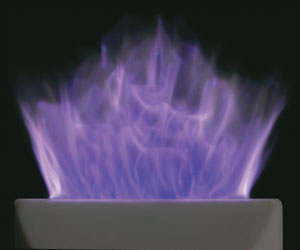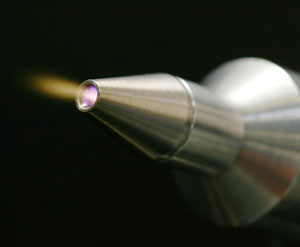Air Plasma Surface Treatment
Dec 12th, 2008 | By kmaier@enerconmail.com | Category: Air Plasma, Plasma TechnologiesAir plasma surface treaters use either blown ion or blown arc discharge technology. A key difference between the two atmospheric plasma systems is that blown ion treatment is effective with both conductive and non-conductive surfaces.
 Blown Arc
Blown Arc
Blown arc systems create air plasma by blowing atmospheric air past two high-voltage powered electrodes and is sometimes referred to as corona treatment. The electrical discharge positively charges the ion particles surrounding it. Through direct contact, these particles positively charge the treated area of the object’s surface. This makes the surface more receptive to any applied substance such as inks. Enercon’s Dyne-A-Mite HP is an example of a blown arc plasma system.
To compare the advantages and application considerations, request a copy of the plasma treatment technology comparison chart.
 Blown Ion
Blown Ion
Blown-ion systems push pressurized air past a single electrode which discharges inside the treater head. The electrode energizes electrons which, through bombardment, create positively charged ions within the discharge chamber. The air pressure forces the ions to accelerate and stream out of the tip of the head at high velocity toward the substrate surface. Again, through direct contact, these ions positively charge the object’s surface, increasing its surface energy and making it more receptive to inks and coatings. Because the discharge occurs inside the treater head treatment is possible for both conductive and non-conductive systems. Enercon’s Dyne-A-Mite IT is an example of a blown ion plasma machine.
To compare the advantages and application considerations, request a copy of the plasma treatment technology comparison chart.
